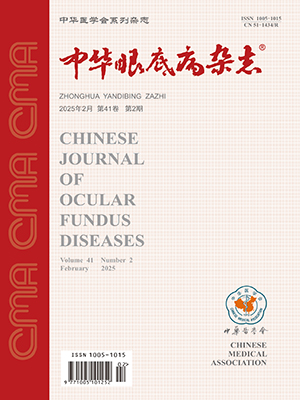Objective To investigate the related factors of the retinal hemorrhage in high-risk infants (HRI). Methods Eight hundred and sixty HRI with histories of high-risk pregnancy and/or neonatal asphyxia after 1-5 days of birth were enrolled in this study.In 860 cases of HRI, 498 infants were vaginal delivery and 362 infants were delivered through cesarean sections. Among 498 vaginal delivered infants, 407 infants were eutocia and 91 infants were with forceps delivery; 298 infants were born following normal labor, 102 infants experienced prolonged labor, and 98 infants were urgent birth. The retinal hemorrhages were observed and conditions were graded into three degrees of Ⅰ, Ⅱ, and Ⅲ. Conditions of neonatal asphyxia were evaluated based on criteria of Apgar score. The incidence of retinal hemorrhage in the different types of deliveries and labor processes were compared, and the relationship between degree of retinal hemorrhage and grade of neonatal asphyxia were analyzed. Results In 860 cases of HRI, retinal hemorrhages were found in 202 infants (23.5%). Within these 202 infants, 75 infants (37.1%) were Ⅰ degree retinal hemorrhage, 75 infants (37.1%) were Ⅱ degree retinal hemorrhage, and 52 infants (25.8%) were Ⅲ degree retinal hemorrhage. In these 202 infants of retinal hemorrhage, 172 infants (85.1%) had histories of asphyxia; 119 infants (69.2%) were graded as mild asphyxia-risk, and 53 infants (30.8%) were graded as severe asphyxiarisk. There was a statistical difference of the degree of the retinal hemorrhage between the mild and severe asphyxia-risk infants ( chi;2=34.61,P<0.01). The incidence of retinal hemorrhage after vaginal delivery was higher than cesarean section delivery with significant statistical difference ( chi;2=30.73,P<0.01). The incidence of retinal hemorrhage after forceps delivery was significantly higher than eutocia with statistical difference ( chi;2=62.78,P<0.01). Both prolonged and urgent childbirth had statistically significant higher incidences of retinal hemorrhage compared to normal labor in the process of vaginal delivery ( chi;2=45.86, 71.51; P<0.01). Asphyxia, types of delivery, prolonged and urgent labors were risk factors of retinal hemorrhage for HRI (r=7.46,4.87,15.03,6.47;P<0.01). Conclusions The incidence of retinal hemorrhage in high-risk infant was 23.5%. And, asphyxia, types of delivery, prolonged and urgent labors may play roles of risk factor in retinal hemorrhage of HRI.
Citation: ,Rongjiang LUO,Liu ShaoRui. Clinical analysis of retinal hemorrhages in high-risk infants. Chinese Journal of Ocular Fundus Diseases, 2012, 28(5): 482-484. doi: Copy
Copyright © the editorial department of Chinese Journal of Ocular Fundus Diseases of West China Medical Publisher. All rights reserved




